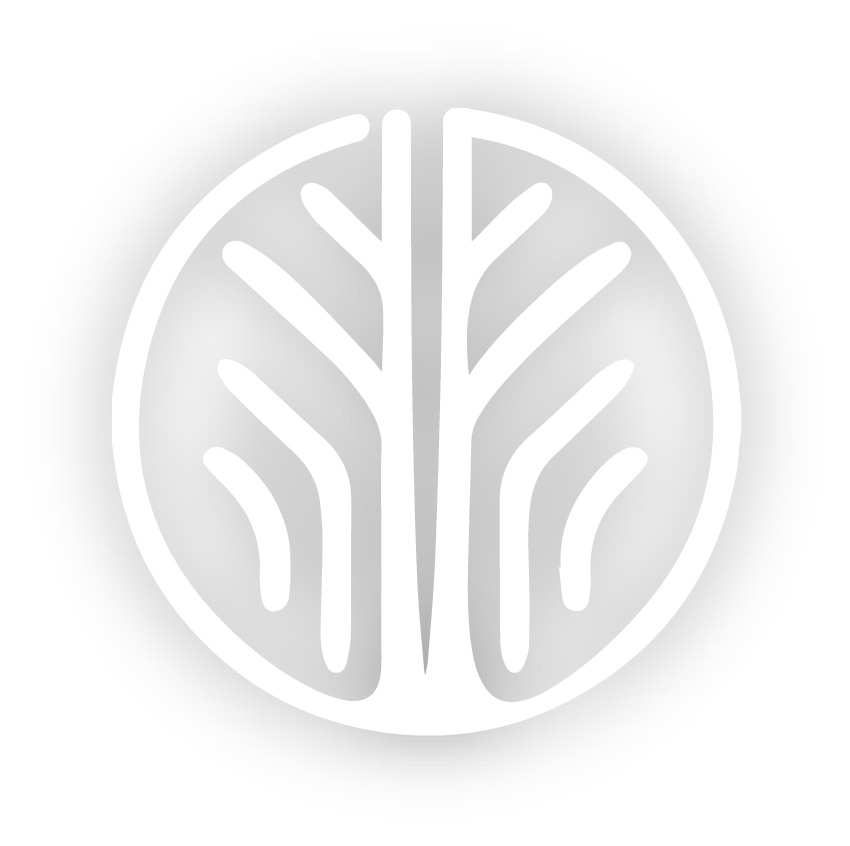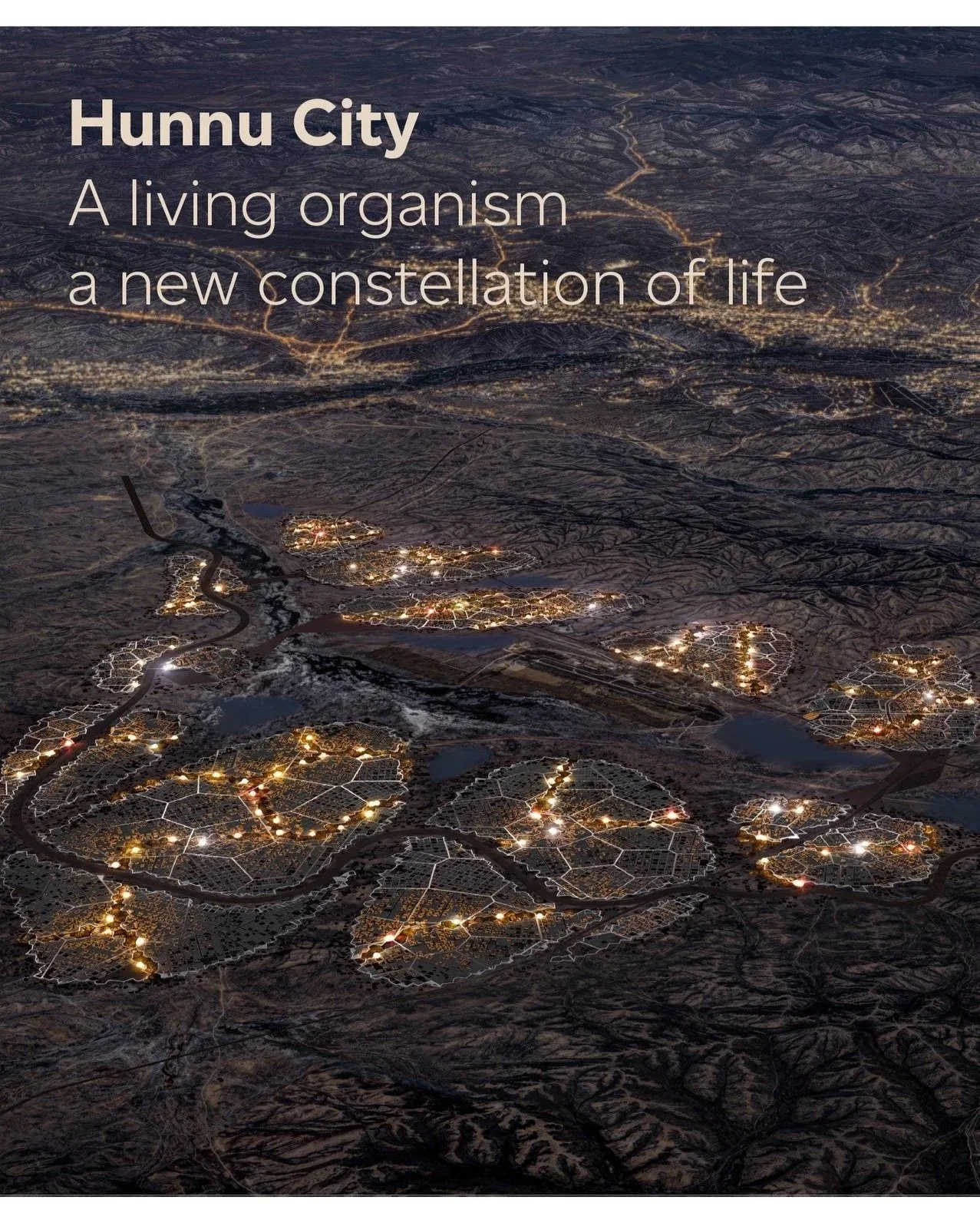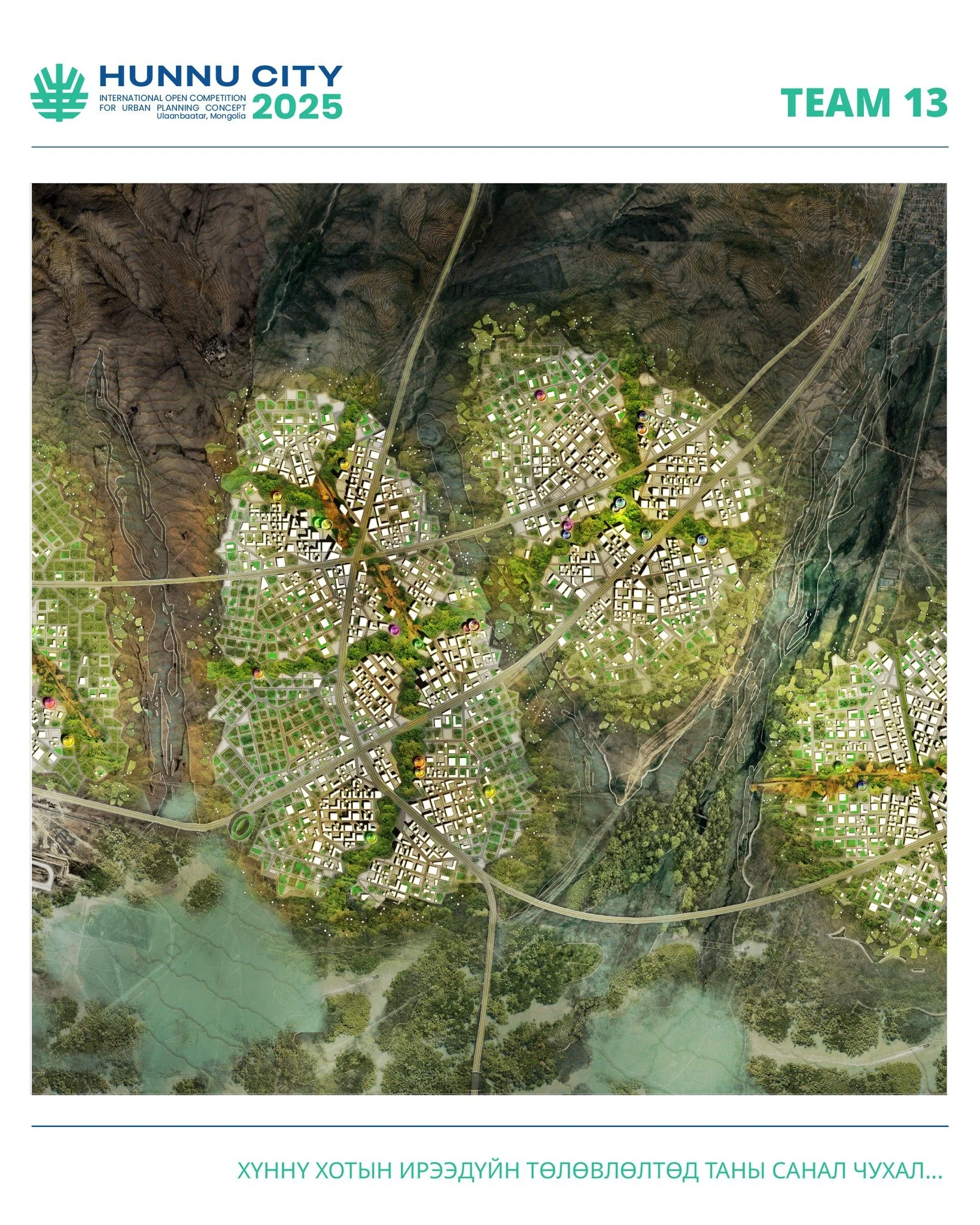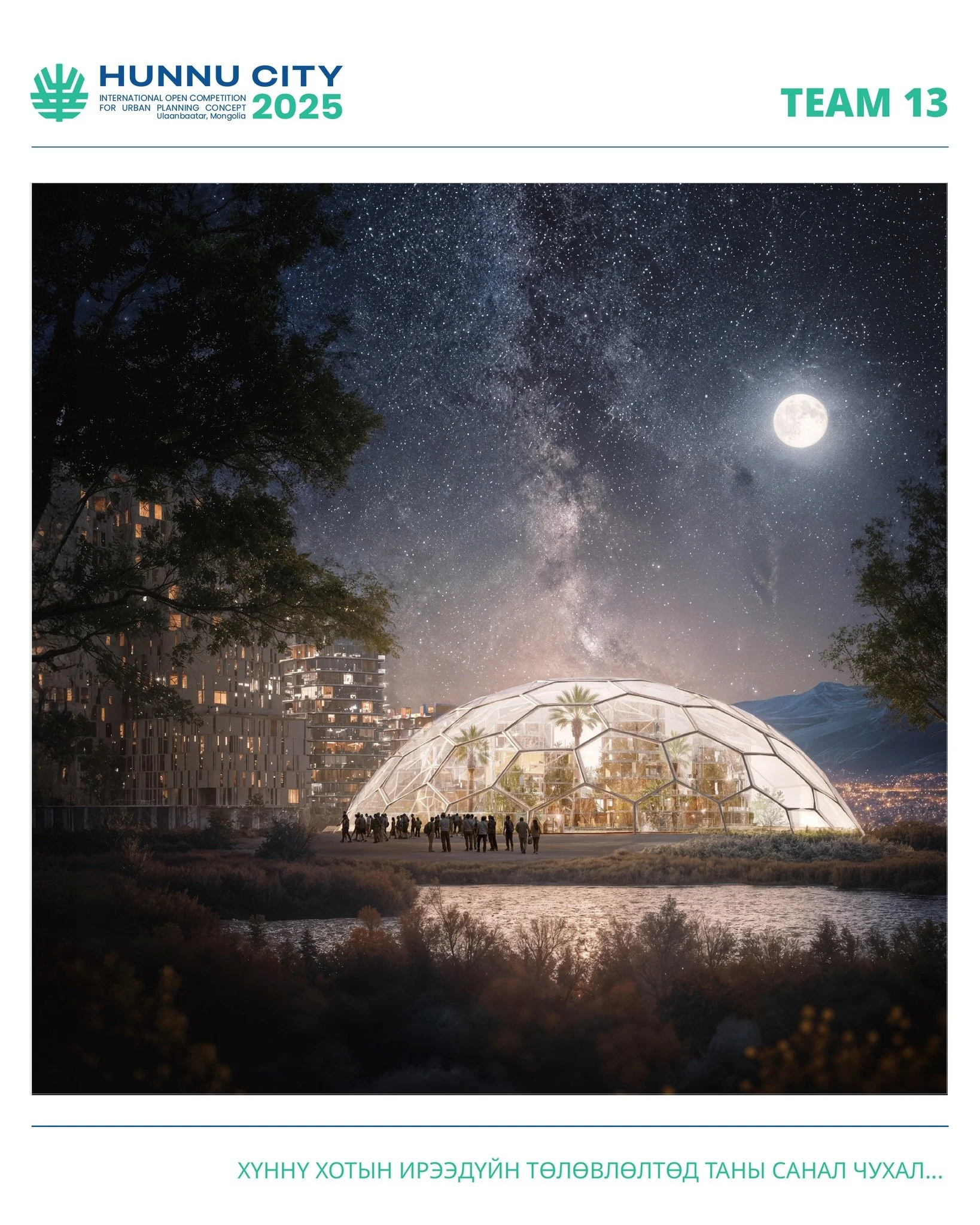
Winning Hunnu City Proposal Sets New Global Benchmark for Regenerative Urban Design
Hunnu City Masterplan
Project: Hunnu City, Mongolia
Size: 31,503 ha
Client: International Competition
Status: Won the Competition
Designers: Bechu & Associés (France), Design leader, Architecture & Urban Planning || Atelier Ten (UK), Regenerative Design, Environmental Design, Biomimicry and Utilities Infrastructure || Robert Bird Group (UK), Civil, Geotechnical and Structural Engineering || SOA Architecture (Italie), Associate firm, Architecture || MIC-Hub (Italie), Mobility || Parc Nouveau (Italie), Landscape Architecture || Future Food Institute (Italie), Food systems transition || Embix (France), Smart-grid and energy || The Climate Company (France), Climate modelling and adaptation
The winning proposal for Hunnu City is grounded in a simple guiding question: How would nature lead the design? The team approached the project by studying the rhythms and intelligence already present in the Mongolian steppe and allowing the land to reveal its own plan. This commitment to designing as nature would, shaped by water, topography, ecology, and seasonal time, became the foundation of the entire master plan.

LETTING THE LAND LEAD
Using the Living Story methodology, the design team immersed itself in the region’s exposed landforms, sensitive hydrology, ecological succession patterns, and the nomadic behaviours that have long defined relationships between people and the landscape. Rather than beginning with fixed assumptions, the team listened for the story the land was already telling.
Topography told us where to be as water flows determined the structural spine of the city.
Ecological corridors informed the neighbourhood clusters and ecological services that could regenerate the land. And seasonal variability guided form, function, and resilience.
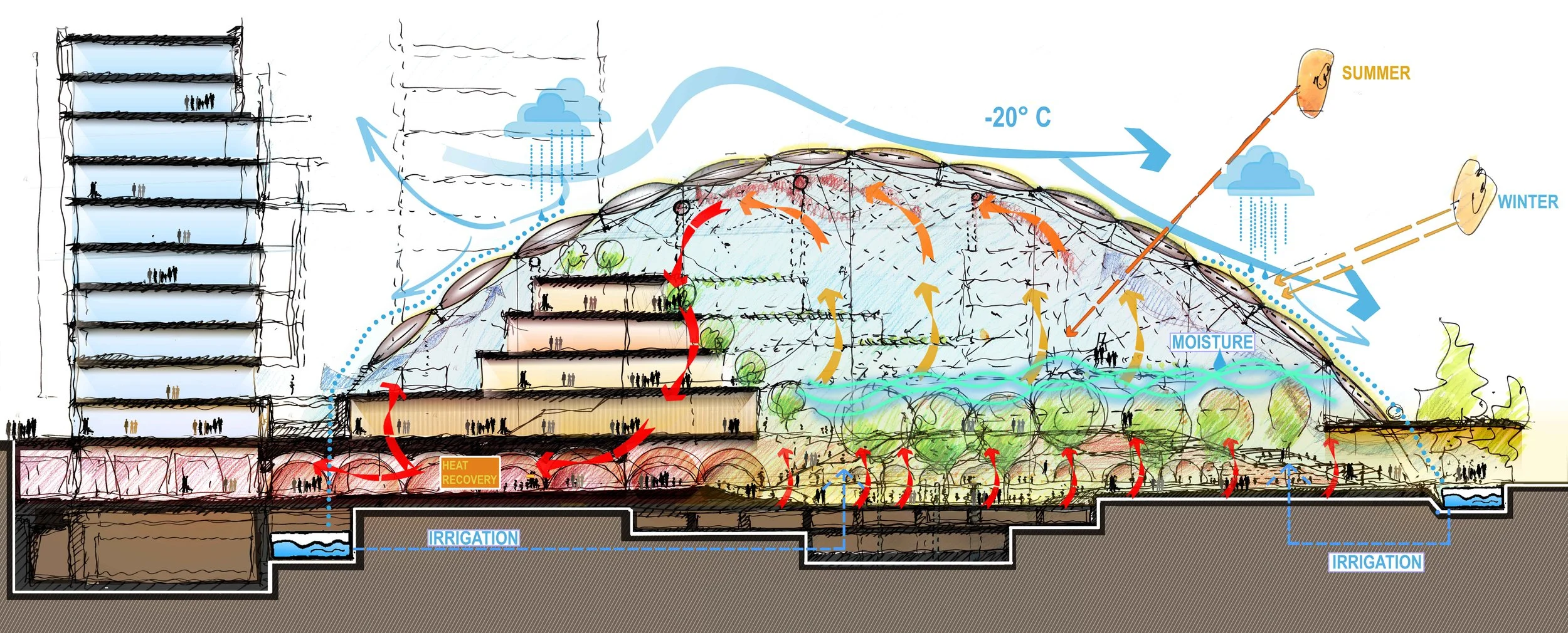

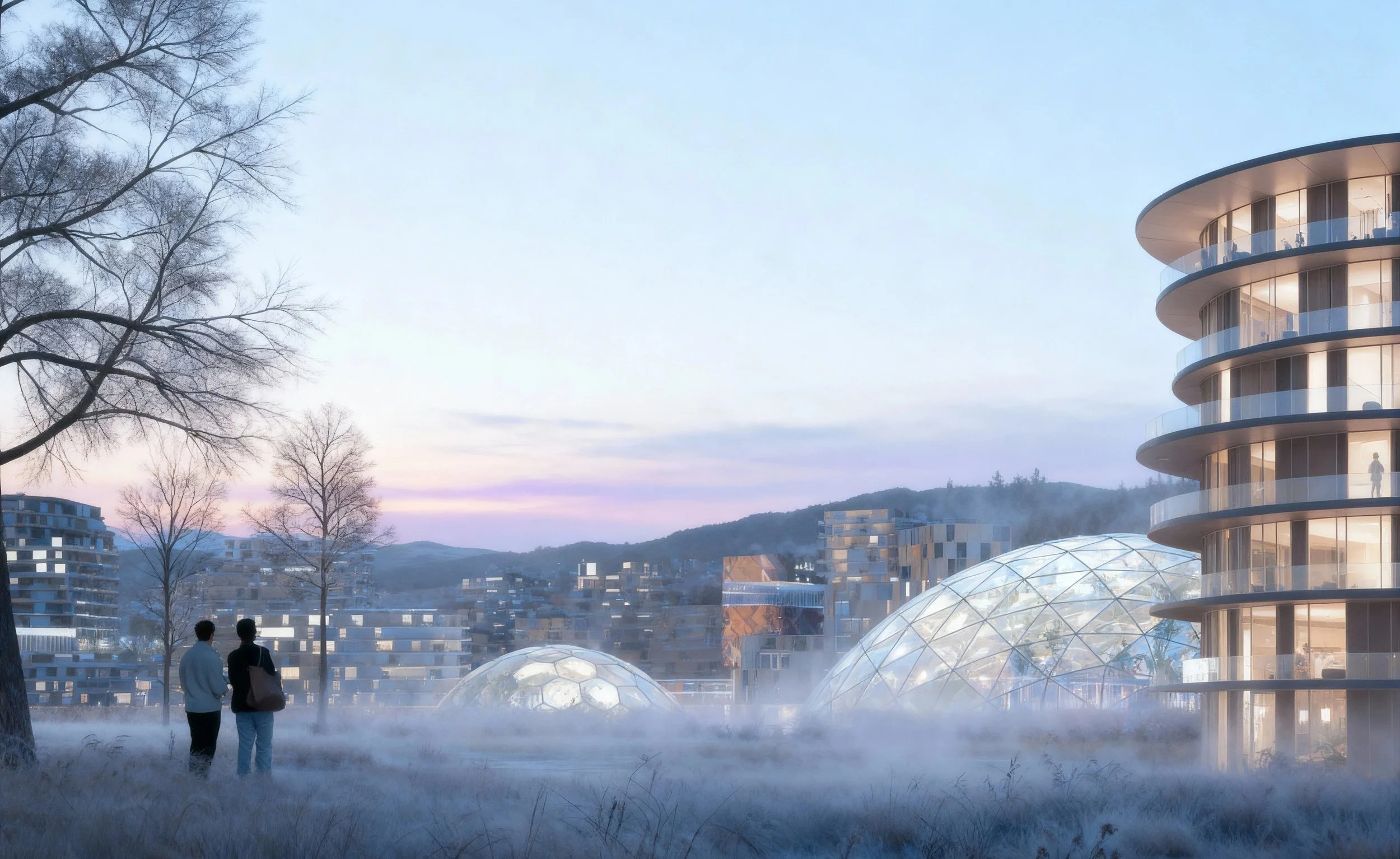
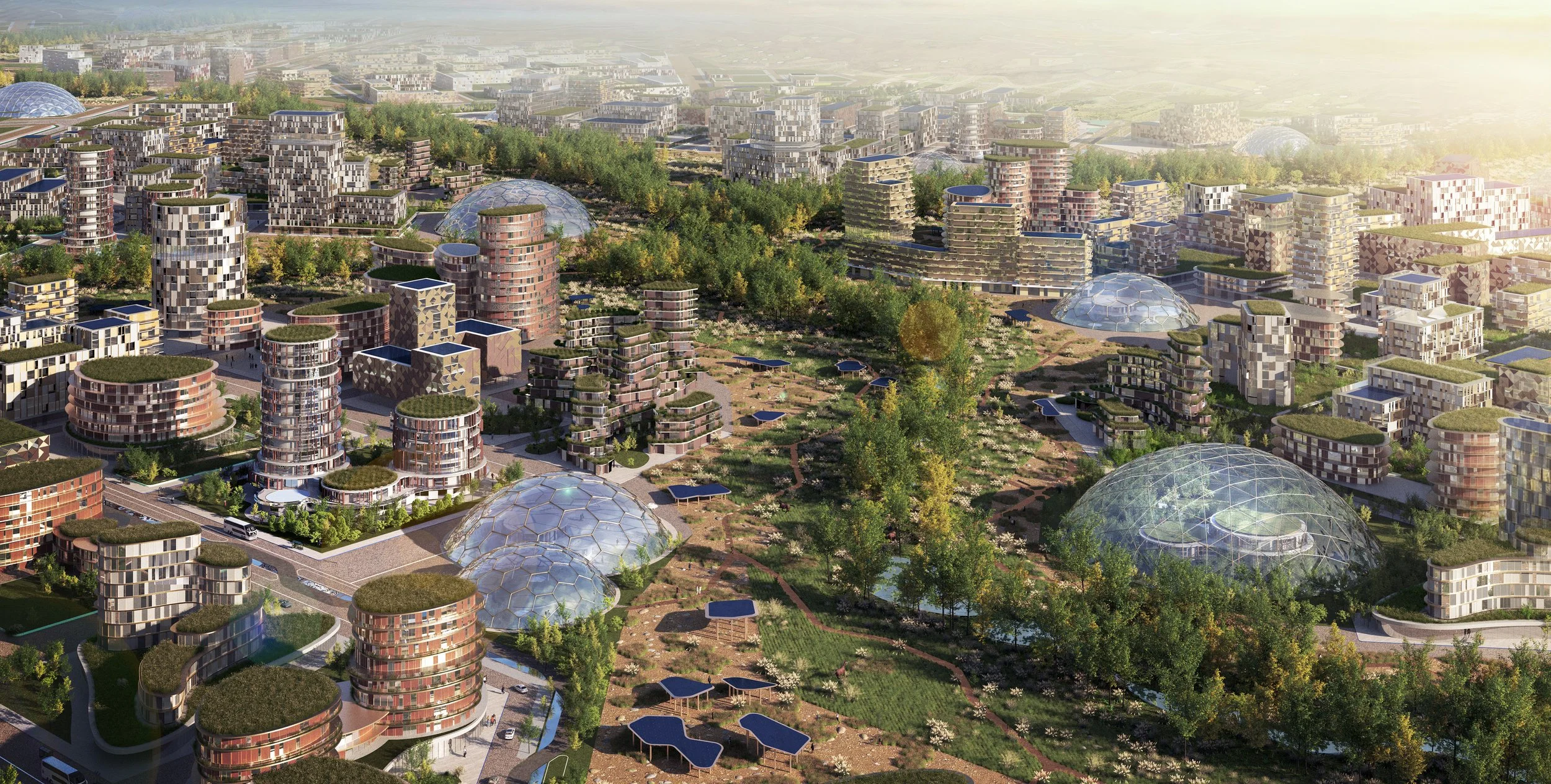
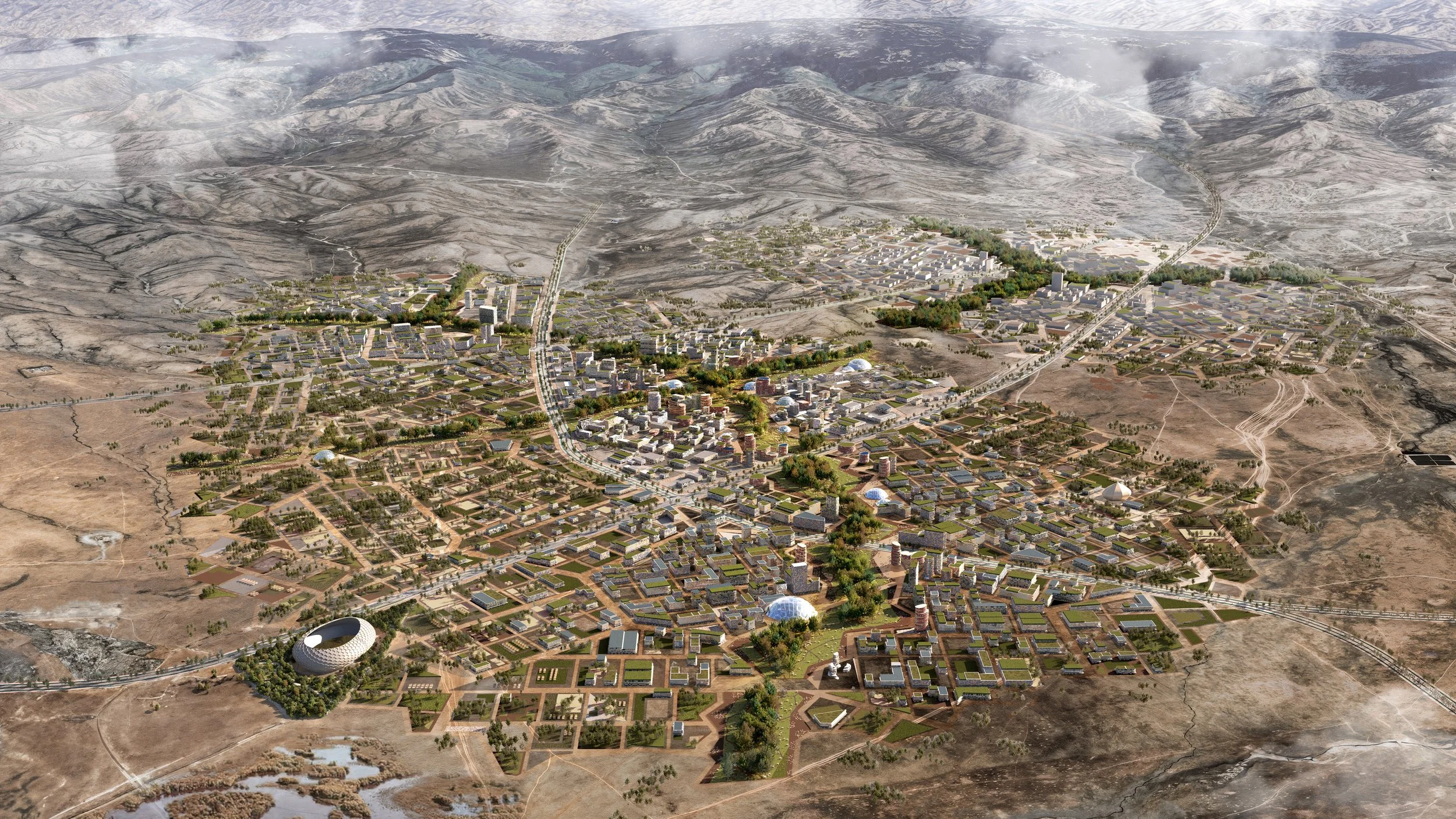
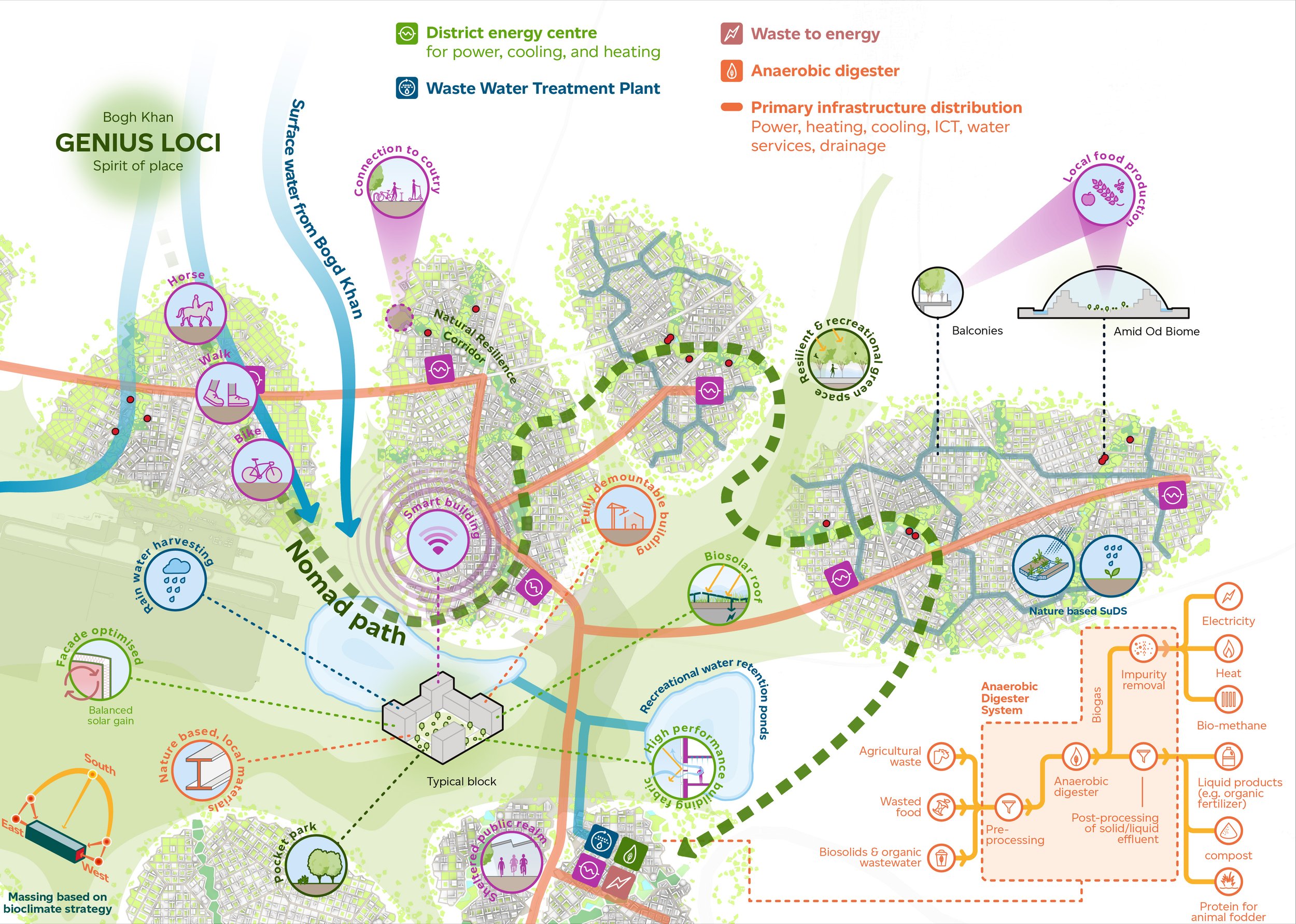
The plan unfolds through adaptive, successive design phases that are learned from earlier phases, mirroring how healthy ecosystems evolve. Natural succession planting establishes the conditions for long-term soil health and ecological service stability, while the water strategy is designed to strengthen, rather than burden, the region’s vulnerable hydrological system. Natural pathways and corridors support both human and wildlife movement, reinforcing a central principle known well to Mongolians: that regenerative design is an ongoing dance with nature.
During the final presentation, the client shared that they felt their culture, climate, and identity were deeply understood in our proposal. This response reflects the intention of the Living Story approach, which seeks to design in partnership with place and honour the socio-ecological context that makes each landscape unique.
Dr. Jamie Miller, Global Director of Regenerative Design & Biomimicry
